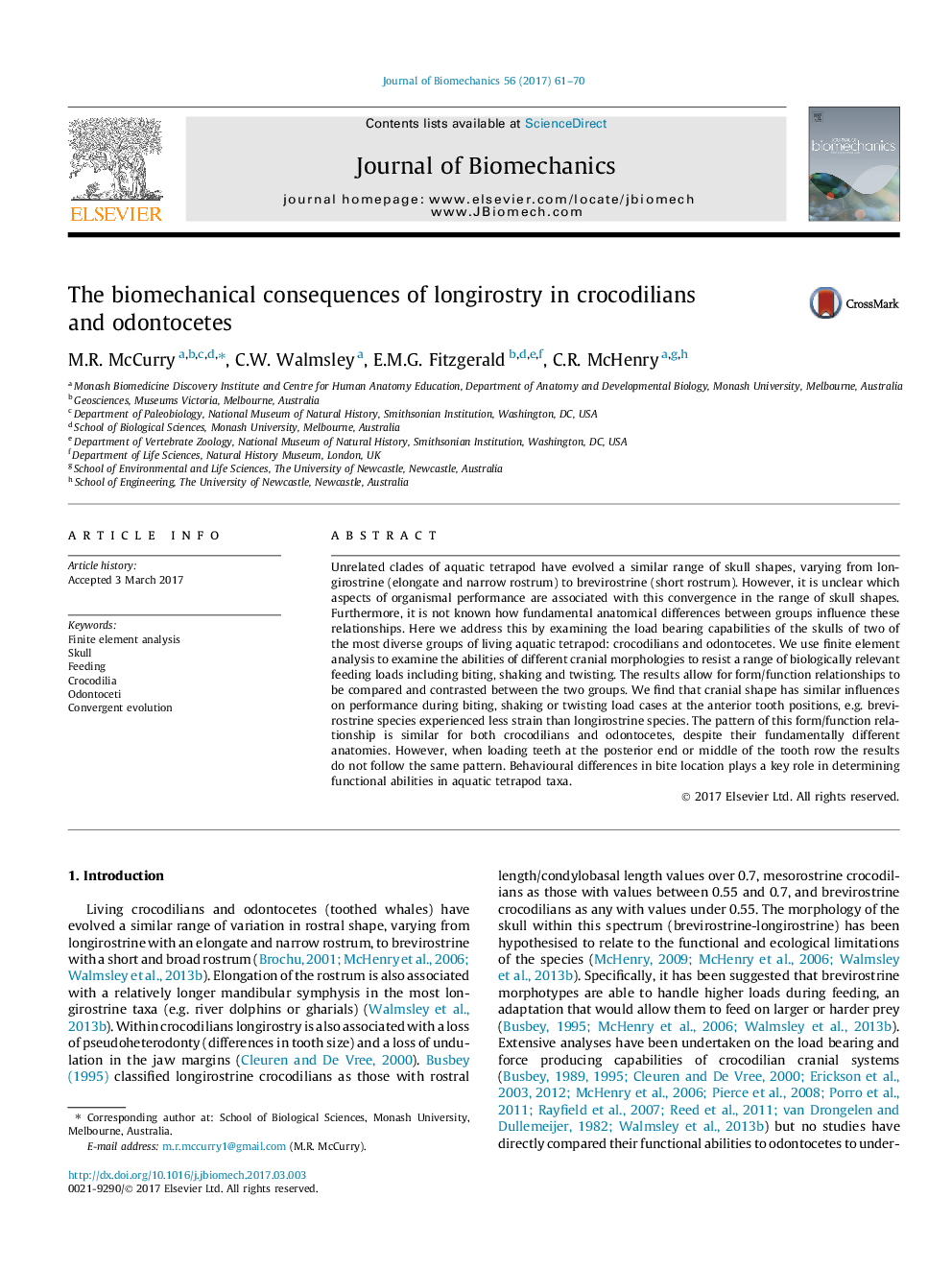| Article ID | Journal | Published Year | Pages | File Type |
|---|---|---|---|---|
| 5032058 | Journal of Biomechanics | 2017 | 10 Pages |
Unrelated clades of aquatic tetrapod have evolved a similar range of skull shapes, varying from longirostrine (elongate and narrow rostrum) to brevirostrine (short rostrum). However, it is unclear which aspects of organismal performance are associated with this convergence in the range of skull shapes. Furthermore, it is not known how fundamental anatomical differences between groups influence these relationships. Here we address this by examining the load bearing capabilities of the skulls of two of the most diverse groups of living aquatic tetrapod: crocodilians and odontocetes. We use finite element analysis to examine the abilities of different cranial morphologies to resist a range of biologically relevant feeding loads including biting, shaking and twisting. The results allow for form/function relationships to be compared and contrasted between the two groups. We find that cranial shape has similar influences on performance during biting, shaking or twisting load cases at the anterior tooth positions, e.g. brevirostrine species experienced less strain than longirostrine species. The pattern of this form/function relationship is similar for both crocodilians and odontocetes, despite their fundamentally different anatomies. However, when loading teeth at the posterior end or middle of the tooth row the results do not follow the same pattern. Behavioural differences in bite location plays a key role in determining functional abilities in aquatic tetrapod taxa.
